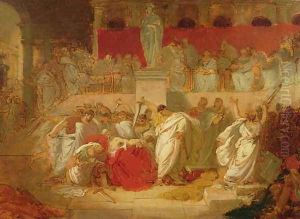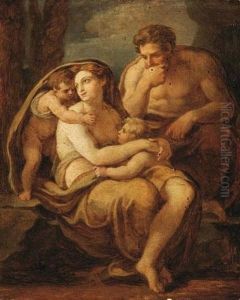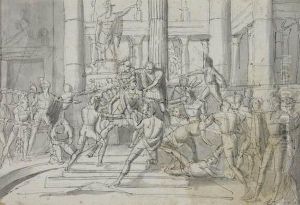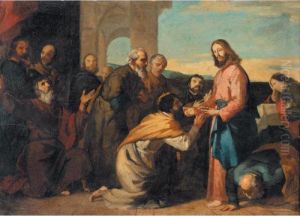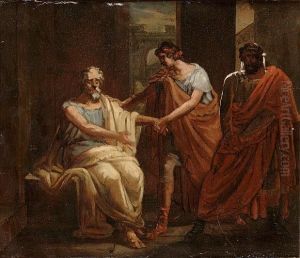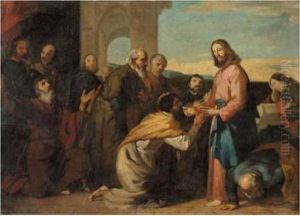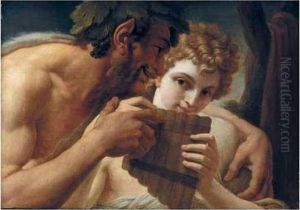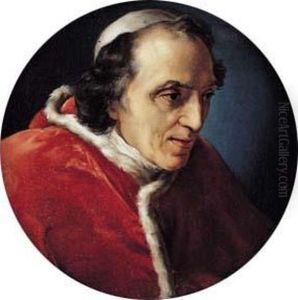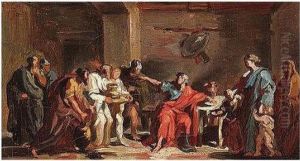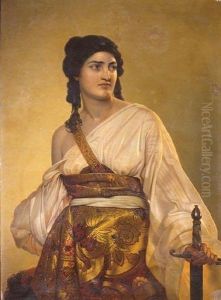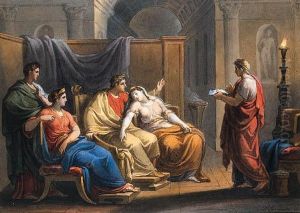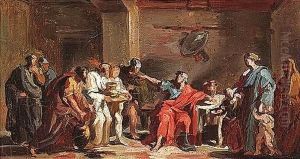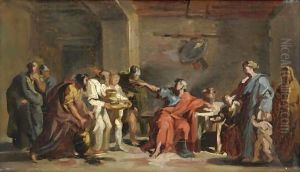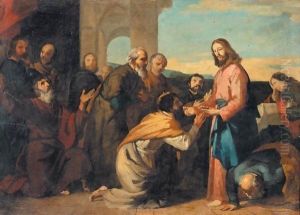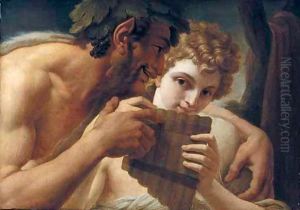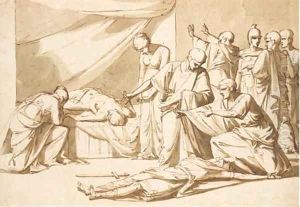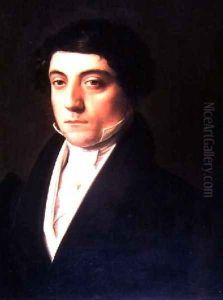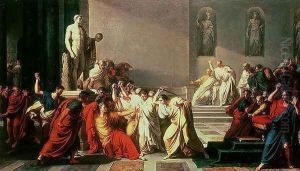Vincenzo Camuccini Paintings
Vincenzo Camuccini was a prominent Italian painter, renowned for his neoclassical style and historical subjects. Born on February 22, 1771, in Rome, Camuccini was deeply influenced by the art of the classical world and the Renaissance masters. His early education was under the guidance of his brother, Pietro Camuccini, who was a respected engraver. Vincenzo later attended the Accademia di San Luca, where he honed his artistic skills and developed a passion for the neoclassical ideals of beauty, harmony, and order. Camuccini's work gained recognition for its clarity of form, careful composition, and attention to historical accuracy. His paintings often depicted scenes from ancient history, mythology, and the lives of great figures such as Julius Caesar and Napoleon Bonaparte. One of his most famous works is 'La morte di Cesare' (The Death of Caesar), which showcases his ability to dramatize historical events with a sense of grandeur and emotional resonance. Throughout his career, Camuccini received numerous commissions from the Vatican and the Italian nobility. He became the Director of the Vatican Museums and was later appointed as the Principal Painter of the Papal States, reflecting his prestige in the art world of his time. Camuccini also played a key role in the restoration of Italian frescoes and was an influential figure in the Roman art scene. Camuccini's contributions extend beyond his paintings. He was an art collector and a mentor to younger artists, fostering the next generation of Italian painters. His works are preserved in various museums and collections, and he is remembered as a leading figure of Italian neoclassicism. Vincenzo Camuccini passed away on September 2, 1844, in Rome, leaving behind a legacy of artistic excellence that continues to be admired.
